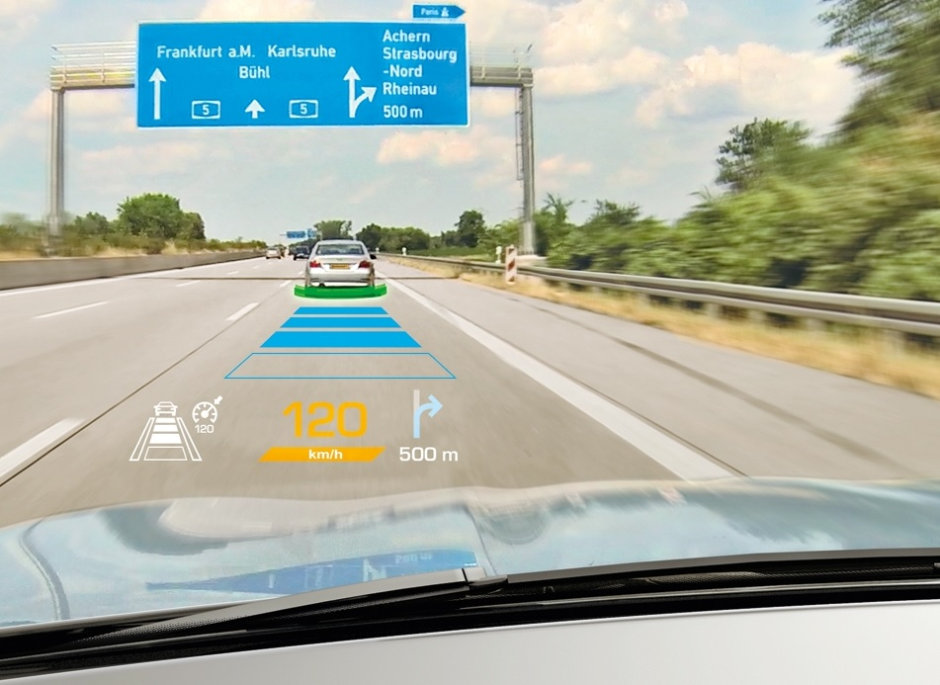Automotive applications mark a niche market for global LED makers. While the developing electronic vehicle and autonomous driving technology with higher requirement for power saving open more opportunities for LED producers, LED technology progress also supports more application options for automobile manufacturers.
Head up display (HUD) which enables drivers to obtain information while looking the frond is an application that can be enhanced through advance LED technologies. A HUD system usually include a picture generating unit (PGU) consisting of an LED array, a thin film transistor production display, a lens system and beam splitter. The units projects images and the images are reflected through fold mirrors and magnified on the windshield or a glass.

(Image: Osram)
Currently there are three types of HUDs for the automotive market, combiner HUD, windshield HUD and AR HUD. Combiner HUD has been replacing by windshield HUD and the application of AR HUD is expanding in high-end automobile models.
AR HUD outpaces windshield HUD as it offers a longer virtual image distance (VID) which is around 7.5 to 15 meters and a wider field of view (FOV) that enable drivers to focus on the frond road without the need to change vision and attention to the windshield.
Power LED or laser lights are critical for HUDs as they need to deliver light that is bright enough for drivers clearly see the projected images and information. Suppliers of the light source components of HUD include OSRAM Continental, Nichia and Episar.












